I came across a wonderful 19th century oil painting the other day and I just had to share it.
This painting is by Ludwig Passini (an Austrian artist – born in Vienna, who lived in Trieste, Rome and Venice). The lady in the painting is his wife Anna Passini. She died less than two years after their marriage in 1866.
Here the lovely Anna Passini is relaxing in Venice, on the balcony of the Palazzo Priuli. By complete chance this palace is round the corner from the Church of San Zaccaria, one of my favourite churches in Venice. You can actually see the dome of San Zaccaria in the distance beyond the bridge.
The artist captures the Venetian architectural detail beautifully. Gothic arches inspired by the East (same style as the doge’s palace). On the left a typical Venetian chimney with a wide top – designed to direct dirty coal dust and smoke upwards and away from the houses, up into the sky, where winds would carry away the fumes and dust.
It’s probably springtime. The tree on the left of the canal is covered in light green, youthful foliage. The shutters of the building opposite are open, to let in light and air. The sky is slightly brooding, clouds are building, perhaps there is a hint of humidity in the air. Mrs Passini, seated on a red velvet cushion, enjoys the view. A small wooden boat is moored at the side of the canal waiting for its next duty. Such magical memories of Venice!
Ludwig Passini, the artist, was part of the social, artistic and literary circle that gravitated to Palazzo Barbaro on the Grand Canal, Venice in the 1880s. The Palazzo Barbaro was a huge, imposing palazzo built by the wealthy Barbaro brothers, Daniele and Marcantonio in the 16th and early 17th centuries. They also constructed a fabulous Palladian villa at Maser, in the Venetian countryside known as Villa Barbaro which is one of the most exquisite and beautifully decorated of the Palladian villas filled with fabulous Veronese frescoes.
In the 18th century an elegant library was created at Palazzo Barbaro with a richly decorated stucco ceiling. In the centre of the library’s ceiling was placed one of Giovanni Battista Tiepolo‘s masterpieces The Glorification of the Barbaro Family. However by the 19th century the Barbaro family was defunct and much of their art and property had been sold off. In fact Tiepolo’s ceiling decoration is now in the Metropolitan Museum of Art in New York.
At about this time in the 1880s Daniel Sargent Curtis, a wealthy American gentleman and relative of the painter John Singer Sargent arrived in Venice as part of his Grand Tour of Europe. He rented Palazzo Barbaro and later bought the palace. Palazzo Barbaro became the focal point of American ‘high society’ in Venice. Visitors included Henry James, James McNeil Whistler, Edith Wharton, Robert Browning and of course the ‘artist in residence’ himself Signor Ludwig Passini. It is said that Henry James completed his novel The Aspern Papers at Palazzo Barbaro. A regular visitor was Isabella Stewart Gardner, a wealthy Bostonian who adored Palazzo Barbaro. She was also an art connoisseur and collector. She was advised by Bernard Berenson, an art expert and intellectual who helped wealthy art collectors to make sensible purchases (acting in the role of an upmarket sales agent).
When Isabella Stewart Gardner returned to Boston she was so enamoured with Venice and Palazzo Barbaro that she and her husband set about building a Venetian palace style home for themselves. They modelled their new home on the Palazzo Barbaro in the area that is now Fenway Park, Boston. Building of Isabella’s home began in 1899 and she moved in a year or two later. She remained there until her death in 1924, when she left the building, her private apartments and her art collection to the public. To this day The Gardner Museum is an important part of the artistic and cultural heart of Boston.
So if you find yourself in Boston and missing the art and history of Europe, then head over to Fenway Park, not for a baseball game but for the chance to stroll through a building that looks and feels like a Venetian palace.

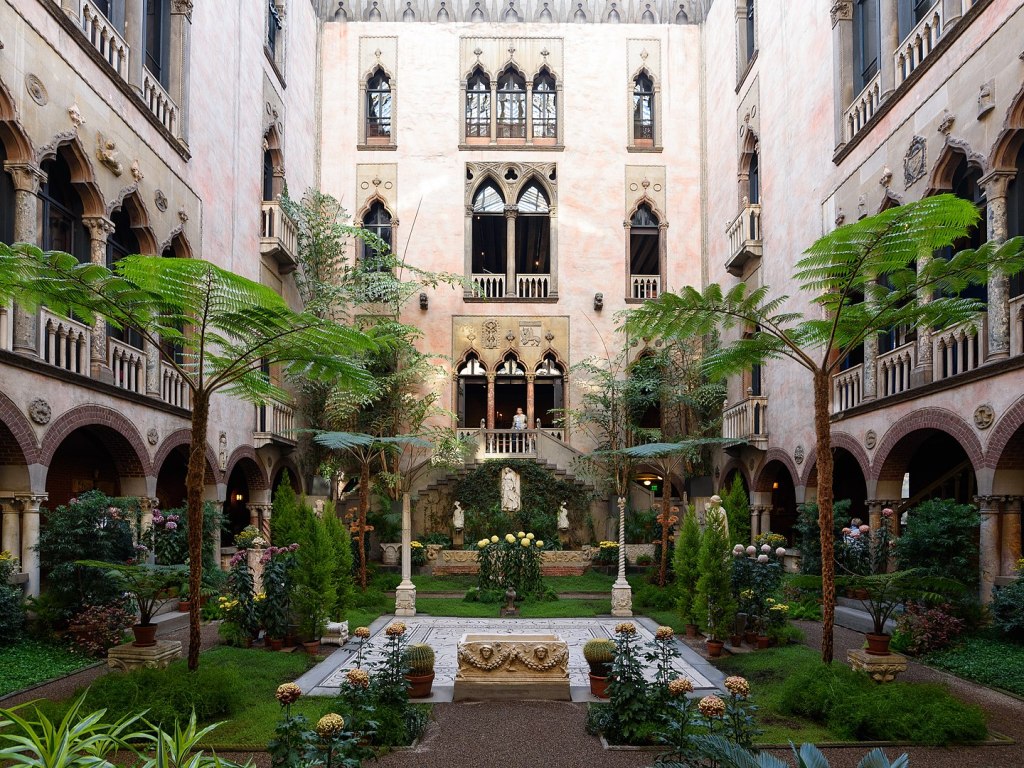
NOTES:
- In 1990 the Isabella Stewart Gardner Museum was the victim of a huge art theft. Thirteen world class pieces of art, including works by Manet, Degas and Vermeer were stolen. They have never been found. There is a US $ 10 million reward for information leading to their recovery.
- To discover more about Isabella’s home and museum: www.gardnermuseum.org
- For more articles on Venice, art and life in general: An A-Z of Venice – it’s purely personal
- Further reading on Venice here: Venice – there’s treasure in every church
- Venice and plague: Venice – Health, Quarantine and Santa Maria della Salute
- Sunday in Venice….
- Saints and Angels in Venice…
- Commentary from Europe in the time of Covid – The reality of travel in Europe – March 2021
- #LetterfromEurope 2 – Letter from Europe – April 2021
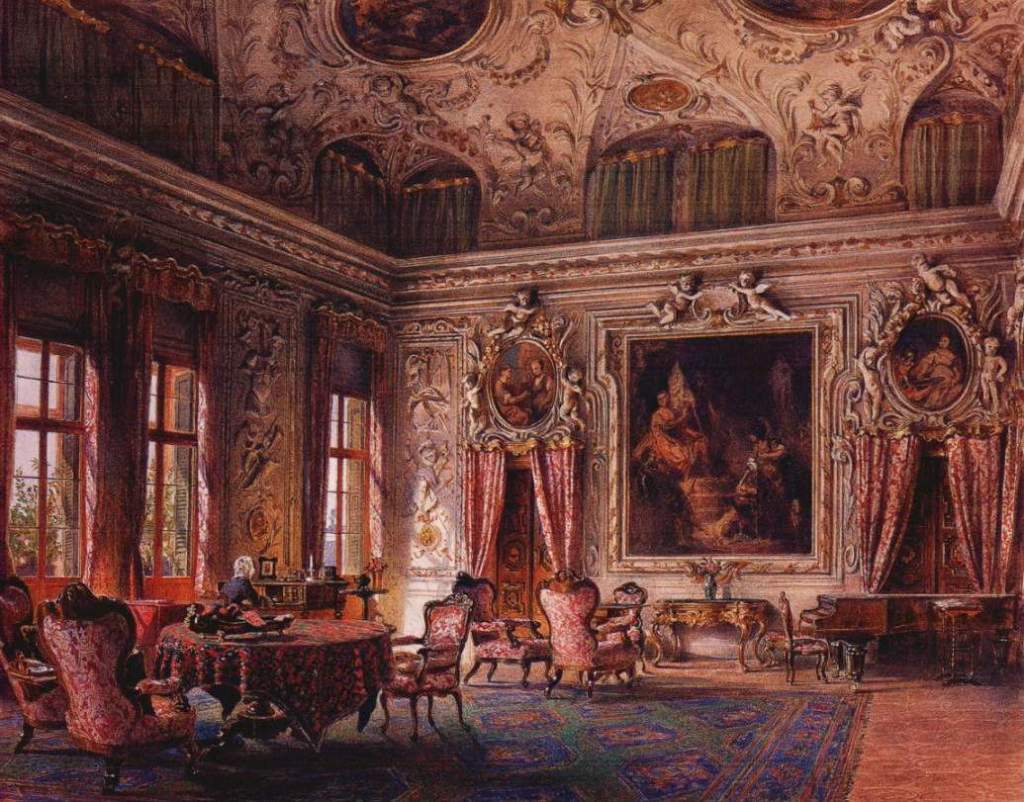
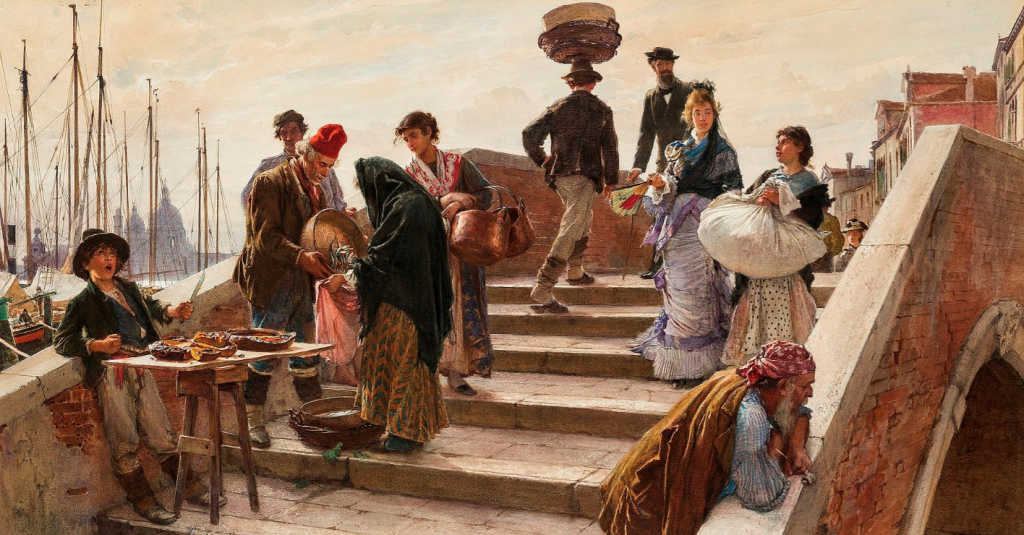
It’s interesting to compare the work of Passini with his contemporary – Carl Spitzweg who shows us that art can be beautiful and also make us laugh……Artist Carl Spitzweg shows that art can make you laugh…
- Ludwig Passini lived from 1832-1903. Born in Vienna and died in Venice.
- Carl Spitzweg was roughly his contemporary 1808-1885. Born in Germerling, Germany and died in Munich.
- Stylistically I find them very similar.
Ludwig Passini – mini-bio (with thanks to Tutt’Art Pittura Scultura Poesia Musica): Ludwig Johann Passini (1832-1903) was an Austrian narrative and genre painter🎨 and printmaker. Born on 9 July 1832 in Vienna, the son of the engraver Johann Nepomuk Passini. The Passini family moved to Trieste in 1850. On 9 November 1864 Passini married Anna Warsaw (1841-1866), who was the daughter of Robert and Mary Warschauer, the great-granddaughter of banker Joseph Mendelssohn and the great-great-granddaughter of philosopher Moses Mendelssohn. https://www.tuttartpitturasculturapoesiamusica.com/2019/06/Ludwig-Passini-Genre-painter.html
For inspiration in art Venice is always the solution! Paintings, poetry, photography, film all inspired by Venice…..
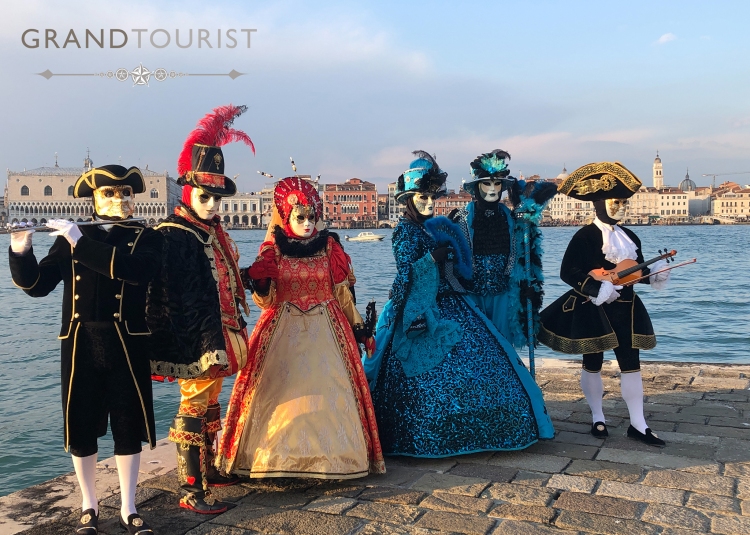
- Inspired by a painting: April 2021
- Developed (slightly) July 2021
- Reorganised (massively) November, 2021
- Tailor-made journeys in Europe. www.grand-tourist.com
- Discussion, articles, comment on journeys, travel, landscape: www.greyhoundtrainers.com
April 2023
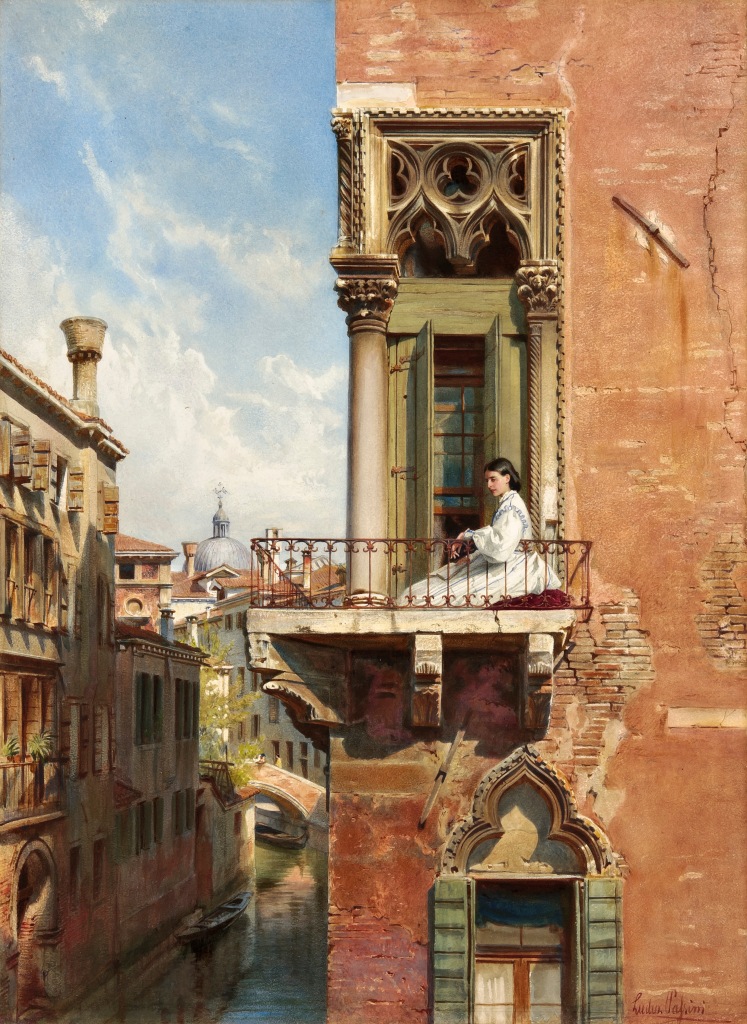

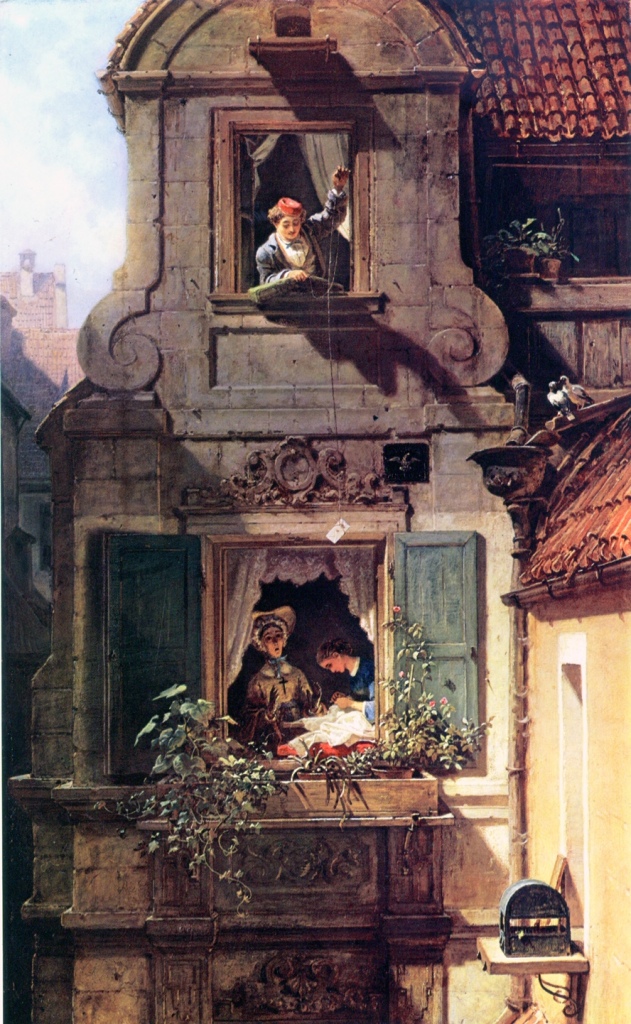

Recently looked through my family tree and found Ludwig was my great great uncle. My family has originals of his paintings in our home. My grandmother always spoke of this one as her favourite.
LikeLiked by 1 person
That’s amazing – I’d be so interested to learn more. I adore Ludwig Passini and his fabulous ‘scenes’ around Venice x
LikeLike
I’d be happy to tell you everything I know. Feel free to email me with any questions. My mother would know more than I.
LikeLiked by 1 person
Please e-mail me at: janet@greyhoundtrainers.com or janet@grand-tourist.com
LikeLiked by 1 person
What a beautiful study in light and shadows, I wasn’t familiar with this artist. Thank you for opening my eyes, Janet!
LikeLiked by 1 person
Thank you for sharing this painting from Ludwig Passini. Isn’t it magnificent!? I love the amount of detailing, almost had me fooled that I was looking at a photo for a minute.
LikeLiked by 1 person
Thank you – the 19th century artists (when they weren’t being impressionistic) had almost photographic skills. Canaletto too – much earlier had an extraordinary eye for details….
LikeLiked by 2 people